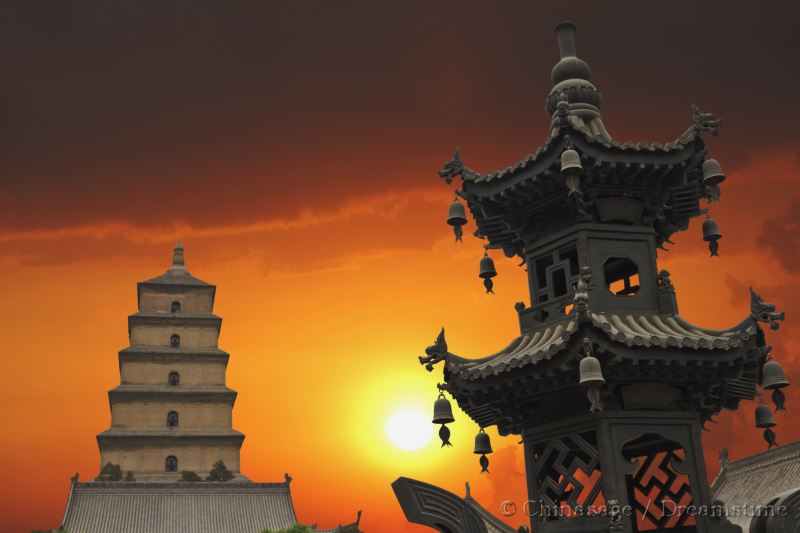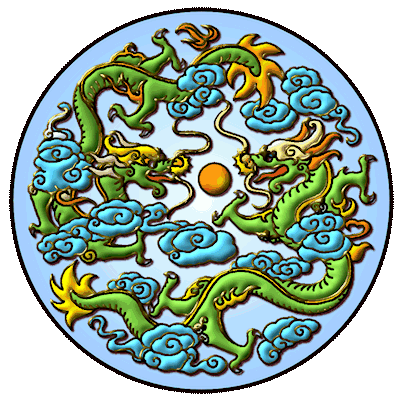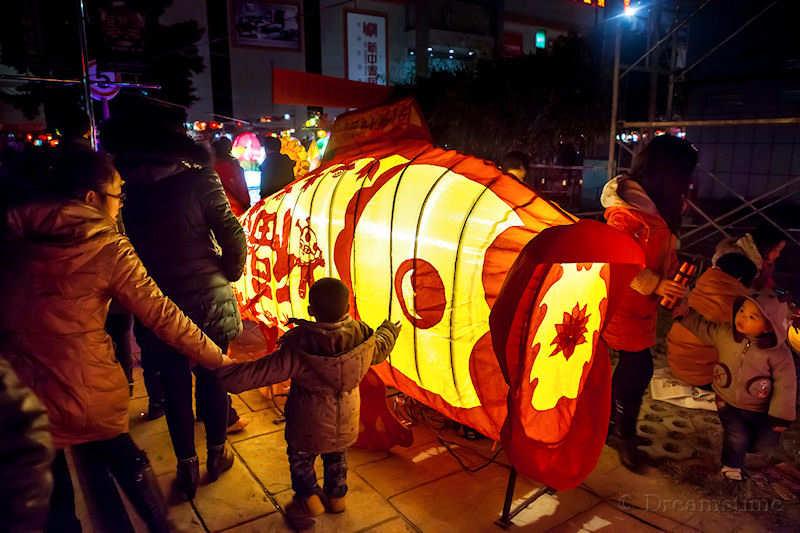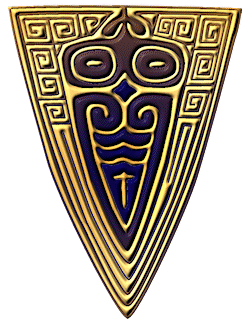Chinese Calendars
 This page describes how the Chinese lunar calendar system works. In this calendar section we have a display of the Chinese calendar for the whole current month showing all festivals as well as a whole year calendar for 2024 and 2025.
This page describes how the Chinese lunar calendar system works. In this calendar section we have a display of the Chinese calendar for the whole current month showing all festivals as well as a whole year calendar for 2024 and 2025.
Chinese Calendars
It has always been vital to know the accurate date in the year so everything is done at the appropriate time. Many activities are keyed to the calendar: when seeds must be planted; grain harvested; fruit gathered and sheep moved to upland. So from the earliest times it has been essential to correctly track the passage of the year by using a calendar.
The motion of the Sun


The earth goes around the sun once every 365.2425 days. This number is rather inconvenient as it can not be divided up into a whole number of days. To work out the day within the year you can measure the angle of the sun at midday, but this assumes you have an accurate idea of time. It is at its highest at the Summer Solstice ➚ on 21st/22nd June and lowest on the Winter Solstice 21st/22nd December [northern hemisphere]. Alternatively if you have some sort of clock you can measure when the length of a day is equal to the length of a night, and so identify the Spring and Autumn Equinoxes ➚. The earliest astronomical instrument is just a stick in the ground - a gnomon ➚ to measure the sun's shadow - from which the sundial is a direct descendent. Using the gnomon allows the solstices to be found based on the longest and shortest shadows.
In the western Julian Calendar ➚ an extra leap day needs to be inserted into the calendar every four years (4 x 0.25 = 1) to keep the solar calendar synchronized with the earth’s orbit. However, the number of days is actually a little less than 365.25 it is closer to 365.2425, to account for this discrepancy the Gregorian calendar ➚ was introduced with additional rules for leap days in century years (2100 will not be a leap year but 2000 was). By the time the Gregorian system was introduced in 1582, the old Julian calculation had drifted from the true solar time by ten days or more. There were mass protests when these days were wiped from existence. The Orthodox Eastern Church ➚ has still not accepted the Gregorian system and that is why they celebrate Easter ➚ on a much later date.
The Stars

Perhaps more useful than using the sun as a clock is to take a look up at the stars. [For more on Chinese constellations please visit: Chinese stars and constellations]. The sun appears to move relative to the backdrop of stars in an annual cycle - and so the constellation the sun is currently in front of tells you the approximate date. As the sun is so bright, this observation has to be made just before sunrise or after sunset. The stars appear to rotate about one point in the night star - the pole star. The Chinese used the pole star and circumpolar stars rather than the sun as these are easier to observe directly and accurately. As summer progresses different stars and constellations appear above the southern horizon ➚ and this is another way of working out the date.
The motion of the Moon

The moon has been the most useful clock for thousands of years. The moon takes 29.53 days to go around the earth and just as importantly the phase of the moon changes through this period from full to half to new to half and back to full again. By carefully tracking the phase of the moon you can work out the day within a month. It is best to work with the new moon as the starting day of the month, as it is easy to see when the disc is entirely dark without even a slither of light at its edge. People can then easily count through the days within the month up to 29, so as long as it is agreed when is the day of the new moon, you can agree dates and make arrangements for meetings on particular future days based on this lunar calendar.


The word ‘calendar’ comes from the Latin kalendae ➚ ‘to announce’ referring to the Roman custom of announcing the official new moon that started the month; everyone then started counting the days within the new month.
Most regrettably the date calculated by the sun is out of step to that by the moon. There are 12.37 lunar orbits in a year and coping with this awkward number was a real problem for human civilizations. If this was a whole number then calendars would be far simpler. It is likely that this incomplete thirteenth part month of the solar year is the true origin of 'unlucky thirteen ➚'.
One coincidence is that 19 x 12.37 is very close to the whole number of 235 (it's actually 235.03) and so the lunar and solar cycles roughly repeat each other every 19 years - this is called the Metonic cycle named after the Greek mathematician Meton ➚, who discovered it in 432BCE. The Chinese had independently discovered this as early as 600BCE.

Chinese Calendars
China has adopted the western Gregorian system of strange lengths of months with extra leap days at the end of February to correct for the true length of solar year. This was introduced into China when it became a Republic in 1912. New public holidays such as Labor Day (May 1st) and National Day (October 1st) are fixed on the Gregorian calendar.
China developed its traditional calendar system independently from the West. China has two calendars which are still followed today, one based on the moon and one on the sun.
The lunar Chinese calendar is the most important as it determines the dates of many Chinese traditional festivals. Instead of adding an extra leap day every four years the calendar introduces a whole leap month every few of years. This calendar follows the moon precisely so months are either 29 or 30 days long according to accurate predictions of the occurrence of the new moon at a specific place. The months are called 小月 xiǎo yuè small months (29) and 大月 dà yuè big months (30) and are numbered rather than named.
This may seem a little complicated until you bear in mind that some Christian festivals such as Easter are still synchronized to the moon and not the sun. Christians developed a similarly complex calculation to the Chinese for calculating the date for Easter ➚ each year.
Chinese Seasons
The start of the Chinese lunar year 年 nián is at the Spring Festival or Chinese New Year, timed as the second new moon after the Winter Solstice. The Chinese originally split the year into two seasons Spring 春 chūnand Autumn 秋 qiū (hence the name 'Spring and Autumn period'). These were split to form the four modern seasons by adding Summer 夏 xià and Winter 冬 dōng. However, for a brief time an extra season was added so that there were five seasons to tie in with five elements. The lunar months were named within the season so 孟春 mèng chūn was the first month of Spring; 中春 zhōng chūn the second month and 季春 jì chūn the last month of Spring.
An extra month
The position in the year that the Chinese leap (intercalary) month is added varies from year to year. In 2023 it will be added after the second month and in 2025 after the sixth month. The month is called after the normal month it follows with the addition of ‘leap’闰 rùn in the month's name. So the sequence in 2012 was 四月 sì yuè followed by 四闰月 sì rùn yuè. A year with a leap or double 8th month is considered a very unlucky year (1976, 1995, 2014 and 2033). The addition of a whole extra month yields a length of year that can vary from 353 to 385 days.
The invention of the lunar calendar is attributed to the Yellow Emperor back in the mists of ancient China. Very accurate astronomical measurements need to be taken to keep the lunar calendar in step with the complex orbit of the moon. For many centuries the Purple Mountain Astronomical Institute ➚ at Nanjing calculated the calendar for China.
Ten day week
There is no astronomical basis for a seven day grouping of days, unless perhaps, as roughly one quarter phase of the moon. The Chinese originally had a ten day week 旬 xún as this divides a month nearly precisely into three (four seven day weeks gives 28 days while three ten day weeks gives 30 days while the accurate month length is 29.53 days). At this time the days of the week were named after the Ten Heavenly Stems ➚ (tian gan).
The Chinese were very early adopters of counting in tens. Most weights and measures come in units of ten and this was applied to the time of day as well as the weekday. A day was split into 100 刻 kè which were 14.4 minutes long rather than the modern 15 minutes.
Lunar dates
You will see some extra characters on Chinese calendars (including our own free calendar) : Days of the lunar month in the range 1 to 10 use the character prefix 初 chū for ‘early’. Instead of using three characters for 21 to 29 (二十一 èr shí yī and so on) a special character for ‘twenty’ 廿 niàn is used. The number 30 is represented as 三十 sān shí and there is no need for 31 as there are only ever 29 or 30 days in month. This convention gives all days a convenient two character form.
Lunar names
The months 2 to 10 are now numbered as you would expect but there is the special case of the first month which is called 正 zhēng. To keep to the same two character format as with days, the 11th month is sometimes called 冬 dōng (cold) and the 12th month is 腊 là (an alternative meaning is dried meat reflecting the lack of fresh meat in January).
Although lunar months are normally numbered they also have traditional poetic names.
| Month | Chinese | Pinyin | English |
|---|---|---|---|
| 1 | 正月 | zhèng yuè | First month |
| 2 | 杏月 | xìng yuè | Apricot month or 花 huā Flower month |
| 3 | 桃月 | táo yuè | Peach month |
| 4 | 梅月 | méi yuè | Plum month |
| 5 | 榴月 | liú yuè | Pomegranate month |
| 6 | 荷月 | hé yuè | Lotus month |
| 7 | 兰月 | lán yuè | Orchid month or 瓜 guā Melon month |
| 8 | 桂月 | guì yuè | Cinnamon or cassia month |
| 9 | 菊月 | jú yuè | Chrysanthemum month |
| 10 | 良月 | liáng yuè | Fine month |
| 11 | 冬月 | dōng yuè | Winter month |
| 12 | 腊月 | là yuè | Preserved meat month |

The Lichun solar calendar of Jieqi intervals
If you are a farmer it is the sun not the moon that determines when seed needs to be planted, corn harvested, and lambs are due to be born. The Chinese Lunar calendar may be out by over ten days compared to the sun, and this length of time in a short growing season is too important to ignore. So the alternative ‘agricultural’ or 岁 suì calendar is based on the sun. Many still believe that the transition from one jieqi to the net may give discomfort and bad luck - especially at equinoxes and solstices. An action taken in the inappropriate jieqi was expected to end in failure. It has its origin in farming and it is still noted in Chinese calendars and almanacs. Two important traditional festivals are fixed according to the 岁 Suì calendar: the Qing Ming festival and the Dongzhi (Mid Winter) festival.
The sui calendar uses 24 solar terms of 15 or 16 days and, because they are based on the sun, fall on approximately the same Gregorian calendar date each year – plus or minus one day. These are called 节气 jié qì and date back to the Zhou dynasty, The table below gives all the jieqi name and the days according to the Gregorian calendar, if one day is more likely than another that day is given first.
Xiao han: Moderate cold
5th or 6th January
Da han: Severe cold
20th or 21st January
Li chun: Spring begins
4th or 3rd February
Yu shui: Rain water
19th or 18th February
Jing zhe: Insects waken
5th or 6th March. Traditional start of sowing season.
Chun fen: Spring Equinox
20th or 21st March
Gu yu: Grain rain
20th or 19th April
Li xia: Summer begins
5th or 6th May
Xiao man: Grain forms
21st or 20th May
Mang zhong: Grain in ear
5th or 6rd June
Xia zhi: Summer Solstice
21st or 22nd June
Xiao shu: Moderate heat
7th July
Da shu: Great heat
23rd or 22nd July
Li qiu: Autumn begins
7th or 8th August
Chu shu: End of heat
23rd August
Qiu fen: Autumn Equinox
23rd or 22nd September
Shuang jiang: Frost
23rd or 24th October
Li dong: Winter begins
7th or 8th November
Xiao xue: Light snow
22nd or 23rd November
Da xue: Heavy snow
7th December
To master both solar and lunar calendars, Almanacs ➚ are widely published as guides to the best days of the year for doing all sorts of things, from felling trees to drying clothes and getting married.
Cycles of 60 and the counting of Years
Years are now counted just like ordinary numbers; the year of the Common Era. In Imperial China years were specified as the year number of the Emperor’s reign or, after 1911, from Yellow Emperor Huangdi's birth. The same scheme of regnal years ➚ was used in Europe up until recent times. By tradition a life span was at most 60 years, and so a special sexagesimal numbering system for years was also used for the Chinese astrological year. There is some evidence that in ancient days people who reached the age of sixty were buried alive in northern China as it was considered unnatural to live any longer than that. However in the 3rd century CE thinkers like Ji Kang ➚ correctly said that the longest achievable life span was 120 (2 x 60) years. The first years of the new cycle were considered the appropriate time to launch a revolution. Emperor Qianlong abdicated his rule after sixty years of reign in 1794 as he stated in his abdication proclamation that his cycle of rule had ended.
The sixty year cycle that has been used since the Han dynasty is made up of the Ten Heavenly Stems (天干 tiān gàn) combined with Twelve Earthly Branches (地支 dì zhī) that are also used for the astrological years.
The 12 year cycle of branches has its origin as far back as the Shang dynasty in the orbit of the planet of Jupiter. Early observations had shown Jupiter takes about 12 years to orbit the sun (11.86 is the actual figure), and the twelve branches was used to denote the years in the cycle. The earthly branches also denote a direction (see our astrology page) so compasses had 12 divisions not four or eight as in early Western systems. Another astronomical basis for the primacy of 60 is that there is a conjunction between the orbits of Saturn and Jupiter every 60 years (actually 59.58). For this reason Jupiter is sometimes known in China as the ‘year star’ 岁星 suì xīng.
In ancient times the Chinese split the year into six 60 day periods (double months) to make a 360 day year and so the historic importance of cycles of 60 can be clearly seen. It is interesting that the Mesopotamians ➚ used units of sixty for everything, from which we have ended up with 60 minute hours and 60 second minutes. In China there is a traditional epoch of 60x60x60x16x7 years making up 24,192,000 years.
The Ten Heavenly Stems 十天干 shí tiān gān

Each heavenly stem is associated with a number, an element and specific associations. Their principal use is as ‘ordinals’ from ancient time so the third day or the third year would both use the ordinal stem character 丙 bǐng. A week in Shang dynasty times (as recorded on oracle bones) was ten days long. Some legal documents today still use these characters for numbering.
| No | Char | Pinyin | Element | Material |
|---|---|---|---|---|
| 1 | 甲 | jiǎ | Wood | Trees |
| 2 | 乙 | yǐ | Wood | Timber |
| 3 | 丙 | bǐng | Fire | Lightning |
| 4 | 丁 | dīng | Fire | Incense |
| 5 | 戊 | wù | Earth | Hills |
| 6 | 己 | jǐ | Earth | Pottery |
| 7 | 庚 | gēng | Metal | Ore |
| 8 | 辛 | xīn | Metal | Vessels |
| 9 | 壬 | rén | Water | Sea water |
| 10 | 癸 | guǐ | Water | Fresh water |
The Twelve Earthly Branches 地支dìzhī
Each month is associated with an earthly branch. These also denote the astrological years, directions, months and times of day.
| No | Char | Pinyin | Zodiac | Direction | Month | Time of day |
|---|---|---|---|---|---|---|
| 1 | 子 | zǐ | Rat 鼠 | 0° (north) winter | 11 | 11pm to 1am (midnight) |
| 2 | 丑 | chǒu | Ox 牛 | 30° | 12 | 1am to 3am |
| 3 | 寅 | yín | Tiger 虎 | 60° spring | 1 | 3am to 5am |
| 4 | 卯 | mǎo | Rabbit 兎 | 90° (east) | 2 | 5am to 7am |
| 5 | 辰 | chén | Dragon 竜 | 120° | 3 | 7am to 9 am |
| 6 | 巳 | sì | Snake 蛇 | 150° summer | 4 | 9am to 11am |
| 7 | 午 | wǔ | Horse 马 | 180° (south) | 5 | 11am to 1pm (noon) |
| 8 | 未 | wèi | Goat 羊 | 210° | 6 | 1pm to 3pm |
| 9 | 申 | shēn | Monkey 猿 | 240° autumn | 7 | 3pm to 5pm |
| 10 | 酉 | yǒu | Rooster 鸡 | 270° (west) | 8 | 5pm to 7pm |
| 11 | 戌 | xū | Dog 狗 | 300° | 9 | 7pm to 9pm |
| 12 | 亥 | hài | Pig 猪 | 330° winter | 10 | 9pm to 11pm |
Sexagesimal Cycles干支 gānzhī
They are incremented in step to form a cycle of 60 so that:
1 : 甲子 1st stem and 1st branch is followed by 2: 乙丑 2nd stem and 2nd branch then 3: 丙寅 3rd stem and branch and so on up to 10: 癸酉 having run out of stems for 11 the stems start again at one but the stems continue at 11: 甲戌; 12: 乙亥, now at 13 the cycle of branches starts again 13:丙寅. The sequence does not repeat until 60 :癸亥 guǐhài. It may seem a cumbersome system, but it is less prone to misreading or mishearing as two characters together provide the number not just one. To record a year these two characters were combined with the Emperor's reign name. Here is the complete table of the 60 year names of the Sexagesimal Cycle.
The cycle of sixty was all important for recording times as it was not only used for counting the years but also day within the year and the time of day. Four gan zhi together give the exact time: year, month, day and time of day. You may still see this 8 character date and time format in some atrological readings.
| 1 甲子 jiǎ zǐ | 13 丙子 bǐng zǐ | 25 戊子 wù zǐ | 37 庚子 gēng zǐ | 49 壬子 rén zǐ |
| 2 乙丑 yǐ chǒu | 14 丁丑 dīng chǒu | 26 己丑 jǐ chǒu | 38 辛丑 xīn chǒu | 50 癸丑 guǐ chǒu |
| 3 丙寅 bǐng yín | 15 戊寅 wù yín | 27 庚寅 gēng yín | 39 壬寅 rén yín | 51 甲寅 jiǎ yín |
| 4 丁卯 dīng mǎo | 16 己卯 jǐ mǎo | 28 辛卯 xīn mǎo | 40 癸卯 guǐ mǎo | 52 乙卯 yǐ mǎo |
| 5 戊辰 wù chén | 17 庚辰 gēng chén | 29 壬辰 rén chén | 41 甲辰 jiǎ chén | 53 丙辰 bǐng chén |
| 6 己巳 jǐ sì | 18 辛巳 xīn sì | 30 癸巳 guǐ sì | 42 乙巳 yǐ sì | 54 丁巳 dīng sì |
| 7 庚午 gēng wǔ | 19 壬午 rén wǔ | 31 甲午 jiǎ wǔ | 43 丙午 bǐng wǔ | 55 戊午 wù wǔ |
| 8 辛未 xīn wèi | 20 癸未 guǐ wèi | 32 乙未 yǐ wèi | 44 丁未 dīng wèi | 56 己未 jǐ wèi |
| 9 壬申 rén shēn | 21 甲申 jiǎ shēn | 33 丙申 bǐng shēn | 45 戊申 wù shēn | 57 庚申 gēng shēn |
| 10 癸酉 guǐ yǒu | 22 乙酉 yǐ yǒu | 34 丁酉 dīng yǒu | 46 己酉 jǐ yǒu | 58 辛酉 xīn yǒu |
| 11 甲戌 jiǎ xū | 23 丙戌 bǐng xū | 35 戊戌 wù xū | 47 庚戌 gēng xū | 59 壬戌 rén xū |
| 12 乙亥 yǐ hài | 24 丁亥 dīng hài | 36 己亥 jǐ hài | 48 辛亥 xīn hài | 60 癸亥 guǐ hài |
At the birth of a Republic in 1912 there had to be a change to year numbers as there was no longer an Emperor. They chose to adopt the traditional count of years since the birth of the Yellow Emperor Huangdi. It is based on the 'lunar' year so the year number advances on the day of the Chinese New Year (Spring) festival. So February 1st 2022 is the start of Chinese year 4720. Sometimes the sexagesimal year is noted relative to this base year so 2022 is the 39th year of the 78th cycle since Huangdi. To find the Chinese year add 2698 to the Christian year, but take one off if the date precedes the Chinese New Year (Spring Festival).
 For a full year's view please see our 2024 calendar and 2025 calendar.
For a full year's view please see our 2024 calendar and 2025 calendar.